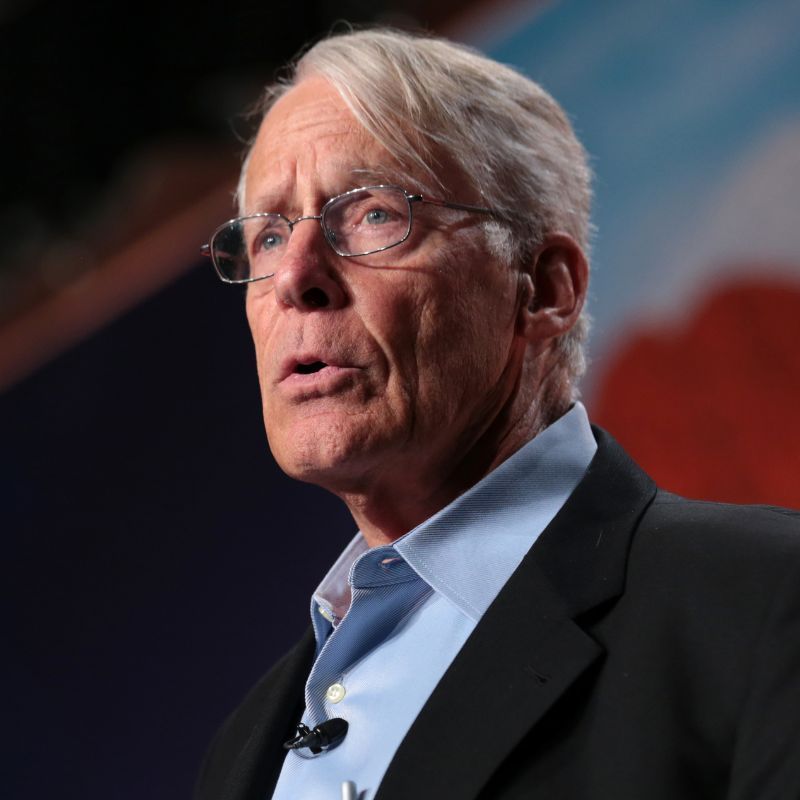The Walton family name stands tall as an emblem of American retail prowess, embodying a dedication to providing consumers with unbeatable value. Originating with a solitary variety store nestled in a quaint Arkansas community in 1962, the trajectory of the Walton family’s business journey has been nothing short of extraordinary. This story brims with entrepreneurial fervour and ambition.
From the Walton family’s modest roots sprang forth a global behemoth, Walmart. In its six decades of existence, it has fundamentally reshaped the landscape of retail, redefining the essence of how humanity engages in commerce.
However, amidst the dizzying heights of their success and wealth, the Waltons (and Walmart) have not been immune to controversy. Their ascent to the summit of the retail world has been punctuated by moments of scrutiny and criticism related to things like lack of sustainability and workers’ rights.
The legacy of the Walton family: A tale of wealth, power and retail empire
The rise and rise of the Walton family and Walmart
Sam Walton, born on 29 March 1918, in Kingfisher, Oklahoma, emerged as a trailblazing figure in the realm of retail entrepreneurship. Armed with a degree in economics from the University of Missouri, Walton set on a journey that would forever alter the landscape of American commerce. Following his graduation in 1940, Walton began his career in retail management, honing his skills within the esteemed J.C. Penney Company management training programme in Des Moines, Iowa.

In 1945, Walton opened his inaugural retail venture — a Ben Franklin variety store in Newport, Arkansas. Five years later, he relocated the store to Bentonville, Arkansas, laying the groundwork for his future endeavours. By the early 1960s, Walton and his brother, James Lawrence “Bud” Walton, had amassed a regional chain of Ben Franklin stores.
However, Walton’s ambitions transcended the confines of conventional retailing, leading him to conceptualise a revolutionary new approach to discount retail. On 2 July 1962, he realised it by inaugurating the first Walmart Discount City store in Rogers, Arkansas, ushering in a new era of affordability and accessibility in retail commerce.
With a commitment to offering a diverse array of merchandise at discount prices within a no-frills setting, Walmart quickly garnered acclaim and adulation from consumers across the country.
The growth of a retail juggernaut
Under the leadership of Sam Walton, Walmart ventured on a trajectory of expansion and innovation. Leveraging innovative strategies such as large-scale purchasing and streamlined distribution networks, Walmart revolutionised the retail landscape.
Throughout the 1970s and 1980s, Walmart’s ascent to preeminence was characterised by a relentless pursuit of growth. Bolstered by strategic acquisitions like Mohr-Value stores and Hutcheson Shoe Company and organic growth, the company proliferated across the United States. By 1985, Walmart boasted an impressive network of 800 stores.
On 7 April 1983, Walton unveiled Sam’s Wholesale Club — a chain of deep-discount wholesale warehouse outlets. Subsequently, in 1988, Walmart introduced ‘Supercenters’, which combined full grocery fare with regular merchandise offerings, further augmenting its dominance.

By 1990, Walmart had ascended to the summit of retail supremacy, surpassing Sears, Roebuck and Co. to become the largest retailer in the United States. The following year marked a significant milestone in Walmart’s trajectory, as the company embarked on its international expansion with the inauguration of a store in Mexico. The subsequent years witnessed Walmart’s continued growth, consolidating its status as a global retail giant.
Sam Walton’s philosophy, which underpinned the success of Walmart, was founded on two key principles: cost reduction and commitment to surpassing customer expectations. These principles were not merely abstract concepts but formed the fabric of Walmart’s operational strategy, driving its growth and dominance in its sector.
Walton’s emphasis on providing everyday low prices (EDLP) was deeply rooted in his belief that accessibility and affordability were paramount to attracting and retaining customers. This strategy was meticulously designed to appeal to a broad demographic, ensuring that Walmart could capture a significant share of the market. By consistently offering products at prices lower than those of its competitors, Walmart was able to establish itself as a cost leader, drawing throngs of price-conscious consumers.

His autobiography, Sam Walton: Made in America, attests to Walton’s relentless pursuit of cost reduction as a cornerstone of his retail philosophy. His hands-on approach to managing prices permeated every aspect of the company’s operations, from supply chain management to store layout and design.
“Every time Wal-Mart spends one dollar foolishly, it comes right out of our customers’ pockets. Every time we save them a dollar, that puts us one more step ahead of the competition — which is where we always plan to be,” he writes in the book.
Moreover, Walton recognised that merely offering low prices was insufficient to guarantee customer loyalty. He understood the importance of providing exceptional customer service, even within a discount-oriented environment. In his view, every customer deserves to be treated with warmth, dignity and respect, regardless of their purchasing power.
This dedication to customer service was not merely a slogan but a deeply ingrained aspect of Walmart’s corporate culture. Employees were trained to prioritise customer satisfaction above all else, fostering a welcoming shopping experience for patrons. This commitment to service was a critical factor in Walmart’s ability to build long-lasting relationships with its customers.
The Walton family tree
At the helm of the Walton family tree was the Sam Walton. Following his passing in 1992, his heirs took on prominent roles within the company, ensuring its continued growth and prosperity. For the most part, besides Sam, the Waltons have eschewed the limelight.
Among the notable surviving members of the Walton family, who are heirs to the company’s fortune, are:

Rob Walton: As the eldest son of Sam Walton, Rob has long been a central figure in the family’s business affairs. Serving as the Chairman of Walmart from 1992 to 2015, Rob played a pivotal role in steering the company through periods of significant growth and expansion.

Jim Walton: The younger son of Sam Walton, Jim Walton has left his mark on the family business as well. With a keen eye for business strategy, Jim has served on Walmart’s board of directors and has been instrumental in shaping the company’s direction.

Alice Walton: The only daughter of Sam, Alice is not involved in the day-to-day operations of Walmart. She is more inclined towards the arts and philanthropy. She has an extensive art collection, including those by artists such as Picasso and Norman Rockwell. She is also the founder of the Crystal Bridges Museum of American Art, located in Bentonville, Arkansas.
Christy Walton: The widow of Sam Walton’s son John, she has inherited a significant portion of the family fortune. Known for her philanthropic efforts, Christy has used her wealth to support causes ranging from education to environmental conservation.
Lukas Walton: As the son of Christy and John, he represents the next generation of the Walton family. While still young, Lukas is poised to inherit a substantial fortune and will likely play a role in shaping the family’s legacy in the years to come.
Ann Walton Kroenke: One of the daughters of Bud Walton, she has carved out her own path in the family business. With interests in sports ownership, Ann is the owner of the NBA’s Denver Nuggets and the NHL’s Colorado Avalanche.
Nancy Walton Laurie: Like her sister Ann, Nancy Walton Laurie has found success outside of the traditional Walmart sphere. As the owner of a horse-breeding farm for Appaloosa horses, Nancy has made her mark in the world of equestrian sports.
Know all about the Ambani family, the richest and most influential family in India
The wealth of the Walton family
Walton family’s wealth is staggering, making them the richest business family in the United States, as of March 2024. The family is also the second richest in the world after the Al Nahyan family, the ruling royal family of the Emirate of Abu Dhabi, according to the 2023 Forbes list of the wealthiest families in the world.
According to Forbes, the combined net worth of the Walton family is around USD 267 billion, with much of their fortune tied to their ownership stake in Walmart. Forbes further claims the Waltons collectively own approximately 45 per cent of Walmart’s stock.
Jim Walton holds the title for the highest net worth, standing at USD 79.1 billion, closely followed by Rob Walton, whose net worth currently stands at USD 78.1 billion. Alice Walton ranks third, with a net worth of USD 73 billion. The younger generation also boasts considerable wealth, with Lucas Walton holding a net worth of USD 28.1 billion.
Christy Walton, the widow of Sam Walton’s son John, possesses a net worth of USD 13.7 billion. Ann Walton Kroenke and Nancy Walton Laurie round out the list with net worth of USD 10.1 billion and USD 10.2 billion, respectively. All the figures are according to Forbes.
In February, the Walton family cashed out USD 1.5 billion from Walmart as the stock neared an all-time high, according to a 2024 Business Insider report.

Philanthropy: The Walton Family Foundation
The Walton Family Foundation, established in 1987, serves as the primary philanthropic vehicle for the Walton family. Guided by the family’s values, the Foundation channels its substantial resources into three core areas: education, environment and community development with a focus on the Arkansas-Mississippi Delta region.
When it comes to education, the Walton Family Foundation is a significant proponent of K-12 charter school expansions and wider educational choice initiatives throughout the United States. They believe this approach allows for greater innovation and improved educational outcomes for students from diverse backgrounds.
Environmentally, the Foundation champions sustainability efforts focused on the protection of marine ecosystems and vital river systems. Their community development work concentrates on enhancing the quality of life in their home region of Northwest Arkansas by supporting projects that bolster economic opportunity and access to the arts.
According to the website, the foundation awarded USD 749.5 million in grants in 2020.
The Walton family’s controversies and ‘Walmart Effect’
This Walton family business and wealth has afforded the members considerable influence, allowing them to shape economic, political and social dynamics on a global scale. However, the Waltons have faced scrutiny and criticism for their perceived impact on workers’ rights, small businesses and local communities.
The arrival of Walmart stores, for one, has been linked to the decline of local businesses. The ‘Walmart Effect,’ as it is called, describes how smaller retailers often struggle to compete with Walmart’s low prices, resulting in closures and a loss of jobs within the community. The concept was popularised in the book The Walmart Effect by Charles Fishman, which further examines these economic and social consequences.
Environmental concerns also surround the Walton family and their business practices. According to Green Peace, critics point to Walmart’s vast supply chain and its contribution to issues like waste generation, greenhouse gas emissions and unsustainable production practices.
Lastly, the Walton family’s substantial political donations and lobbying efforts spark controversy. They support candidates and policies that may disproportionately benefit their business interests. Data from OpenSecrets.org tracks the family’s political spending, fuelling accusations that they use their wealth to gain undue influence in the political arena.
(Hero image: Courtesy of Aaron F. Stone, CC BY-SA 4.0/ Wikimedia Commons; featured image: Courtesy of Walmart, CC BY 2.0/ Wikimedia Commons)
Frequently Asked Questions (FAQs)
-Is the Walton family still rich?
Yes, the Walton family is exceedingly rich and one of the wealthiest in the world, with a combined net worth of USD 267 billion, as of February 2024.
-Is Walmart still owned by the Walton family?
While Walmart is a publicly traded company, the Walton family retains a 45 per cent ownership stake in the corporation, with several members serving on its board of directors.
-Who is the richest of the Waltons?
As of the latest estimates, Jim Walton is the wealthiest member of the Walton family, with a net worth exceeding USD 79.1 billion.
-Who is the most powerful family in the world?
While power is subjective and difficult to quantify, the Walton family ranks among the most influential due to their immense wealth.











![Zenniesha Opakul explains “Bad girls do it well” and her latest exhibition with Khanngoen Nuanual under [Z]ZALEKTA](https://images.lifestyleasia.com/wp-content/uploads/sites/3/2024/03/02113856/S__11018257-500x287.jpg)




